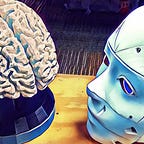The Intersection of Philosophy and Data Science
Proofs vs plots, but far more related than you’d think
In college, I got a minor in data science, along with my studies in philosophy and artificial intelligence. These might seem like disparate fields, but in reality, data science and philosophy are far more connected than you’d think. In this post, I will explain how my studies in philosophy informed my interest in data science, and how data science can help us understand the world around us.
First, let’s start with what philosophy is. Philosophy is the exploration of the nature of being, existence, knowledge, and anything that has to do with meaning. In philosophy, we explore the extremes of ideas, and then we derive what is true about an idea from the extremes. For example, we could say that everything is either true or false. But then we would ask “What about a statement that is true and false?” and we would realize that it must be neither true nor false. This process of going from one extreme to another is called dialectic, in which we take two opposed ideas and find the middle ground between the two.
So how does this apply to data science? Well, we can think of data science as a way to find the extremes of a dataset, to find the truth of a dataset. We can take a dataset and find the extremes of the dataset, and then find the middle ground between the extremes. Let’s take a look at some examples.
1) Say we want to predict if a patient will have a heart attack within the next year. We take a dataset of patients who have had heart attacks, and we have a dataset of patients who have not had heart attacks, and we want to find the extreme of which patients had heart attacks. We can think of these datasets as two different “states” of patients. If the patient has heart attacks, they are in a state of a heart attack. If the patient does not have heart attacks, they are in the state of not having heart attacks. Then, we want to find the middle ground between these two extremes, so we can say that if the patient has had a heart attack, they are more likely to have another heart attack, but not necessarily.
2) Say we want to find out if a patient has a certain disease. We take a dataset of patients who have the disease, and we have a dataset of patients who do not have the disease, and we want to find the middle ground between these two “states”. So we can say that if a patient has the disease, they are more likely to have it again, but they probably won’t get it again.
3) Say we want to find out if our lives have meaning. We take a dataset of people who think that their lives have meaning, and we have a dataset of people who do not think that their lives have meaning, and we want to find the middle ground between these two extremes. So we can say that if a person has a meaningful life, they are more likely to have a meaningful life, but not necessarily.
In all of these examples, we can take the data and find the most significant points. We can then find the middle ground between these extremes, which is the most likely cause but not the only case. The only difference is that data science uses math and visuals to find correlation and meaning, while philosophy uses proofs, logic, and words.
In example 3, a philosopher might use proofs to analyse what was common about those who had meaning and find the middle ground, rather than plots and datasets.
Philosophy and Data Science are really two sides of the same coin: Both try to discover secrets and meaning in the universe using different methods.
I hope that you see why I think the two fields are so tightly interwoven; Data science takes the ideas of philosophy and uses math and visuals to find correlations and meaning in the world’s data, while philosophy uses logic, reasoning, and proof to find meaning in the human condition and the world’s ideas.
Follow me, Ada G Idell
